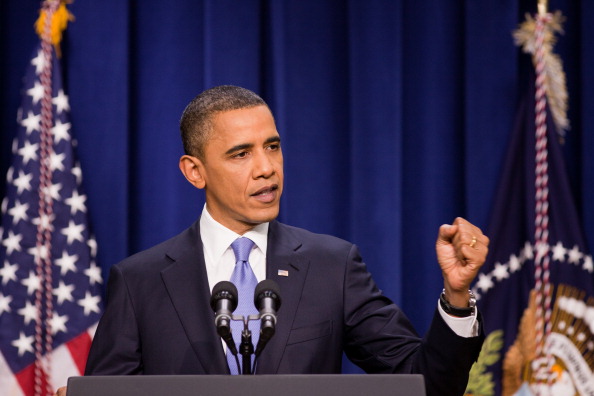After battling Osama bin Laden, Saddam Hussein, al-Qaida, the Taliban, forest fires, hurricanes and floods, America’s Army is now fighting itself. This battle of brothers, however, is over how to downsize in the face of cuts imposed by the Obama administration.
Skirmishes have spilled into the halls of Congress and governors’ offices nationwide. Winners and losers might eventually include communities with a military presence all over the country.
Washington routinely downsizes the ranks after major wars. But Obama’s strategy for a post-Iraq and Afghanistan military has been particularly problematic.
Before 9/11, the armed forces were already too small to cover all of America’s vital interests. And the planet today is a much more dangerous place than it was a decade ago.
An expansive China, a restive Russia, a Middle East in meltdown, an al-Qaida making a comeback, and Iran and North Korea acting as rogue as ever are all challenges that require a U.S. military to be trained, ready and “on watch.” Yet the president seems determined to shrink the armed forces to the smallest level the world has seen in modern times.
Few in the Pentagon are happy with the president’s plan. Yet they must make the most of what they have.
Army Aviation brigades remain one of the military’s most potent assets. They can hunt down enemies hiding in the bush. They can move tons of supplies, troops or refugees on a moment’s notice. But they are expensive to maintain and difficult to train. One of the Pentagon’s toughest tasks is figuring out how to maintain the most cost-effective mix of aviation forces.
The Army’s Aviation assets are spread among the “active” forces and the National Guard. The National Guard is a unique component of the armed forces. Until they are mobilized for federal service, they remain under the control of the states.
Each state has a TAG (The Adjutant General), who commands the forces for the governor until Uncle Sam needs them. Under state control, National Guard often performs an array of duties for the state, including disaster relief.
Since the Army funds much of the National Guard’s training and equipment, the two have to collaborate to make sure the reserves have what they need to do all their jobs.
During the Cold War, the Army organized the guard under a principle called “mirror imaging.” In short, the active and reserve forces were organized the same. That was a precaution to make sure America had a lot more of everything in case the Cold War turned hot.
But that principle no longer makes sense. Today’s Army needs a better plan. And the Pentagon actually came up with one. Rather than salami-size the active and reserve aviation assets, the Pentagon came out with a plan to pool all the Apache “attack” helicopters in the active force. That way, the attack forces are most ready to respond to unexpected conflicts.
Meanwhile, the Army planned to shift more of its most modern Blackhawk utility helicopters to the National Guard. Not only is training and maintenance of the utility helicopters less of a strain on guard units, they will likely be of much more use to the guard forces in peacetime with application in missions from disaster response to search and rescue.
Yet this aviation restructuring plan has triggered an acrimonious debate with TAGs that don’t want to give up “their” attack helicopters. The debate has spilled over into Congress, where some members would like to pass legislation to scuttle the plan.
While state commanders might be able to make the case that they should keep their Apaches, what is best for the nation is to implement the plan as quickly as possible. Overall, it will give the military a bigger bang for its buck.
Beyond squabbling over helicopters, National Guard commanders have a point. The guard is an essential component of the Army. Maintaining a trained and ready guard can’t be an afterthought. Unless all the Army has what it needs to protect us, our military will be hollow force that won’t be prepared to respond to the needs of the nation when the nation calls.
The Army and the Guard obviously need to do a better job of working together. The problem, however, will only really be solved when the president and Congress provide the leadership that the times demand.
Originally published in the Merced Sun-Star.





















